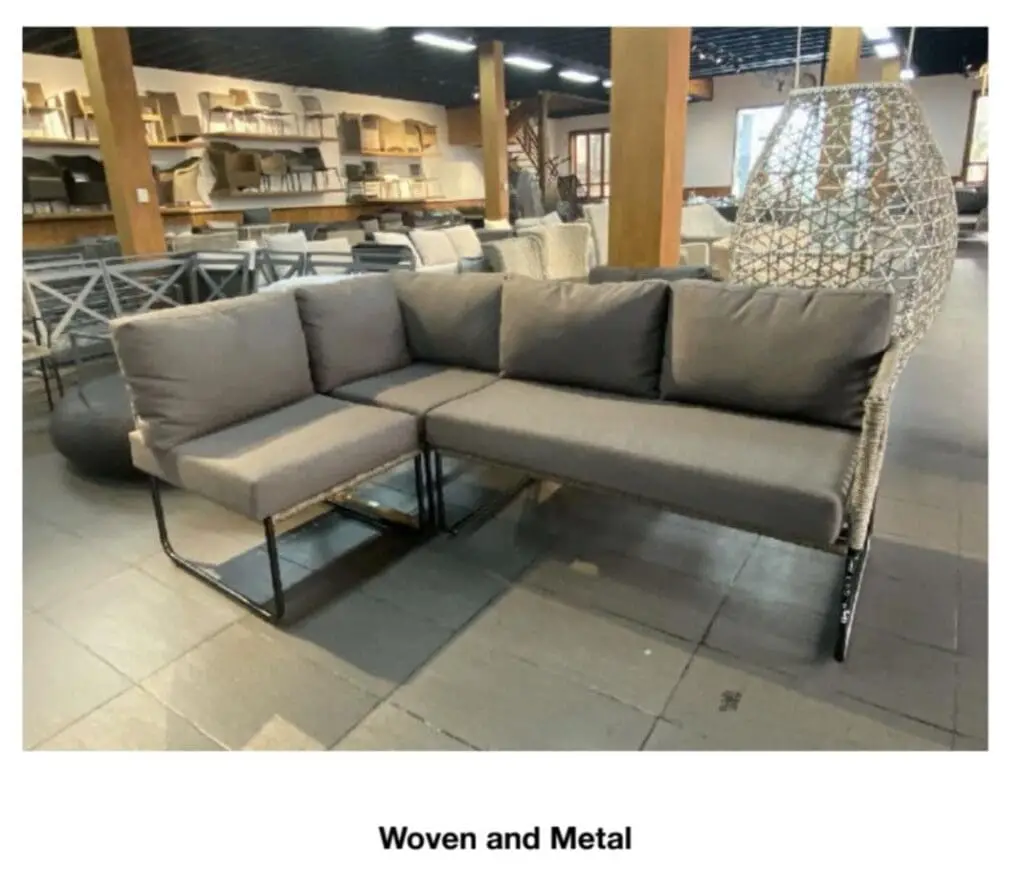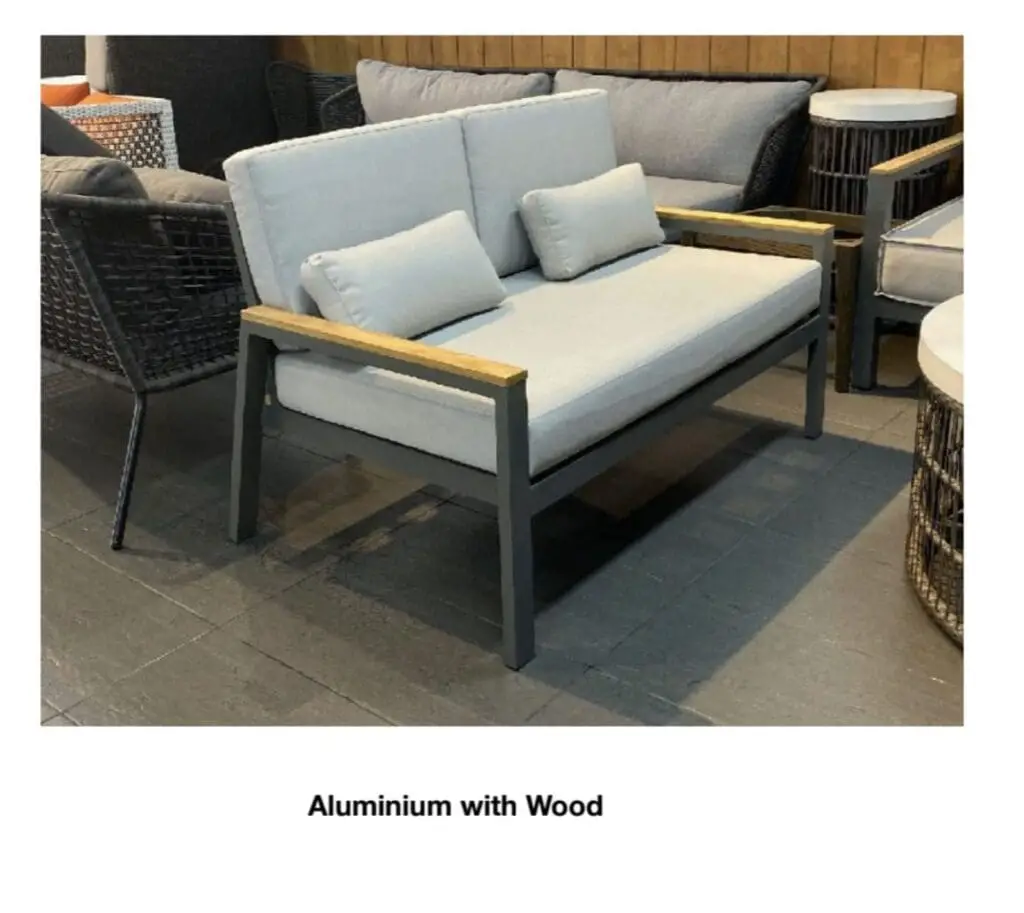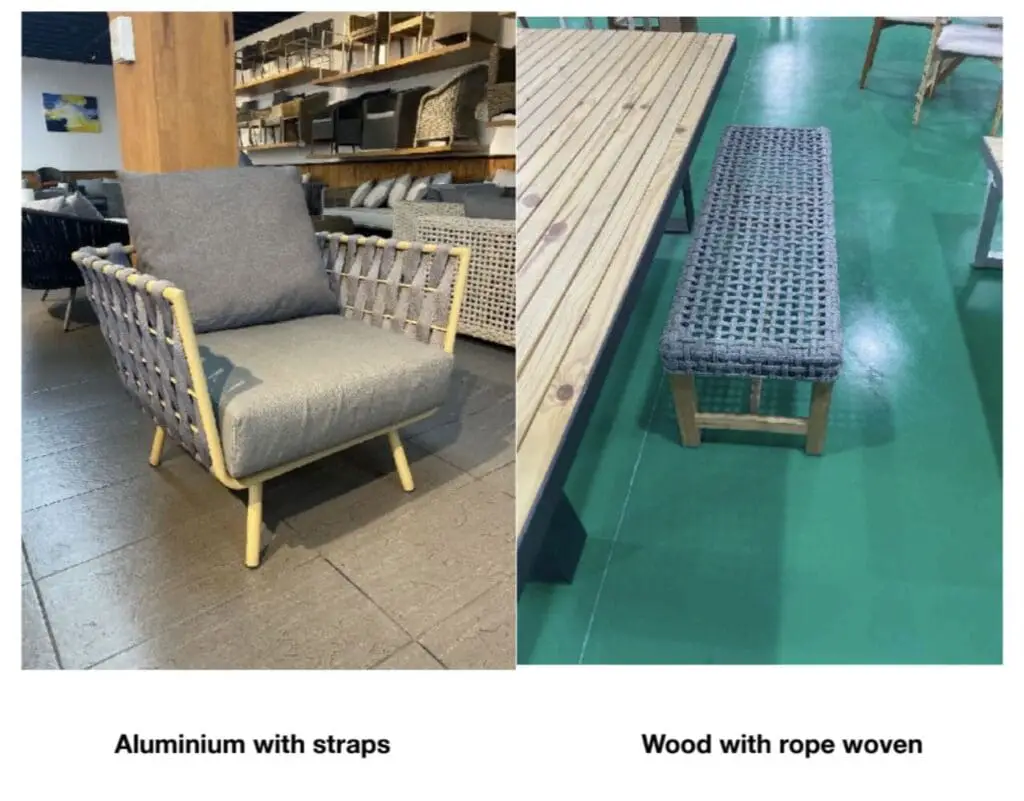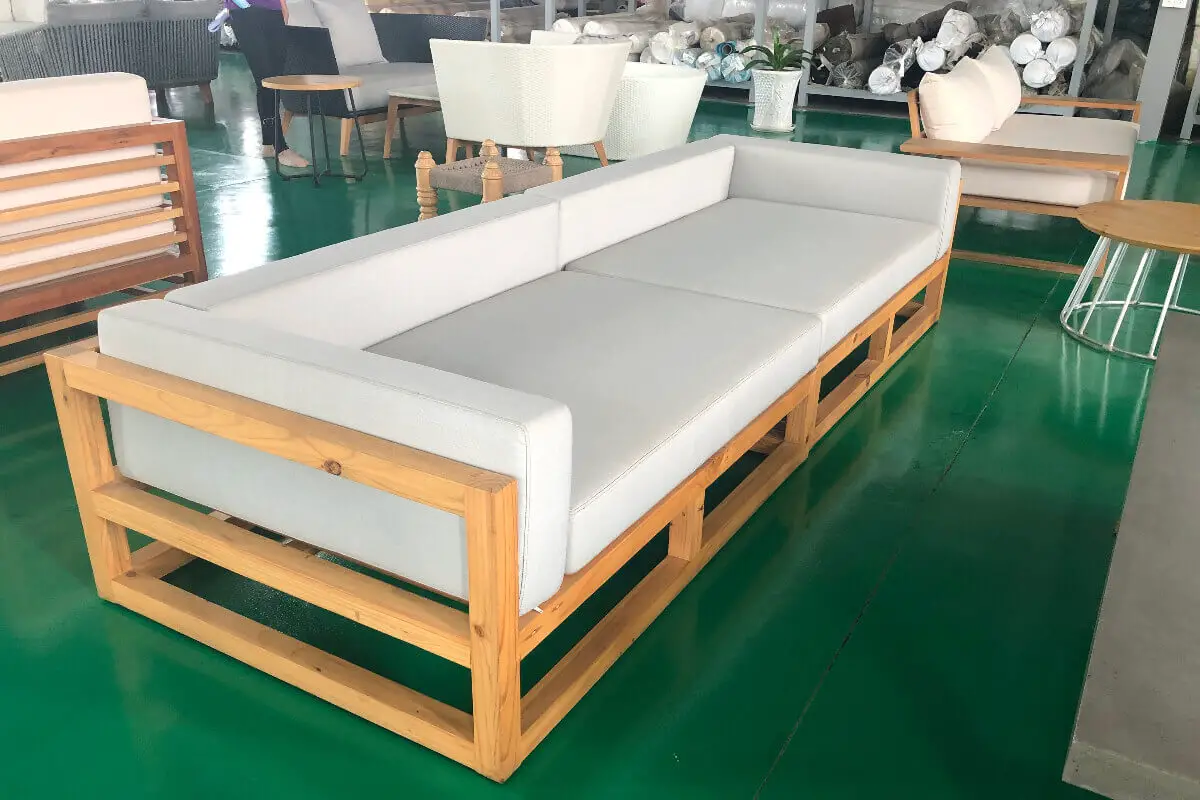Embarking on a journey through the rich tapestry of mid-century modern design, we discover an era where simplicity and functionality reign supreme in the great outdoors. Born out of a period buzzing with innovation, this design movement etched its timeless elegance into the world of outdoor furnishings.
Mid-century modern pieces are not just relics of a bygone age; they are treasures that continue to define the aesthetics of open-air living spaces. As we explore the history and characteristics of these iconic creations, we unveil a story woven by the threads of Bauhaus and Scandinavian touchstones, crafting an enduring legacy of clean lines, organic forms, and an unbreakable bond with the natural world around us.
Table of Contents
- History and Characteristics of Mid-Century Modern Outdoor Furniture
- Materials and Durability in Mid-Century Modern Outdoor Furniture
- Sourcing and Restoring Vintage Mid-Century Modern Outdoor Furniture
- Related Content
History and Characteristics of Mid-Century Modern Outdoor Furniture
The Timeless Charm of Mid-Century Modern Outdoor Bliss
Imagine lounging on a sleek, elegantly crafted chair, a gentle breeze caressing your skin as you sip a cool lemonade, surrounded by simplistic yet utterly sophisticated furniture that screams comfort and style.
Welcome to the world of mid-century modern outdoor furniture, a toast to the golden age of design that brought us pieces that are as much about form as they are about function.
So, how did this enviable style evolve? Mid-century modern outdoor furniture blossomed post-World War II, a period that buzzed with newfound optimism and a craving for innovation.
The suburbs boomed in the 1950s and 1960s, and patios became the new frontier of domestic bliss. This movement needed outdoor furnishings that could match the minimalist architecture of the time and cater to the indoor-outdoor living concept that was becoming ever so popular.
What set this style apart—then as now—was its embodiment of the “less is more” philosophy. Designers such as Harry Bertoia, Richard Schultz, and Russell Woodard were trailblazers who pursued the idea that outdoor furnishings should not only be functional but also beautiful, sculptural renditions that enhance the outdoor living experience.
The defining characteristics of mid-century modern outdoor furniture boil down to a few key elements:
1. Clean Lines and Organic Forms
Mid-century modern outdoor pieces are known for their timeless aesthetic, with clean, crisp lines that are as fresh today as they were decades ago. The furniture’s silhouette often nods to the organic, inspired by natural shapes and made to perfectly suit the human body.
2. Integration with Nature
In line with the era’s architectural tenets, this furniture style is designed to complement and blend with the great outdoors. Natural materials, like teak and wrought iron, are prominent, allowing pieces to meld with the environment seamlessly.
3. Functionality
Every slat and seam is there for a reason. Mid-century furniture doesn’t just sit pretty; it’s meant to be used. Durability and ease of use were central to the designs, which is why so many mid-century pieces have survived the test of time, both in style and function.
4. Bold Yet Understated
Color popped against the natural backdrop in the form of bold yet unobtrusive cushions and accents. Mid-century modern outdoor furniture is known for its ability to stand out and blend in all at once.
5. Material Innovation
The post-war era was a time of material exploration. Designers experimented with everything from plastic to stainless steel, bringing a sense of modernity and durability to outdoor furniture. This wasn’t just wood and wicker; it was the future.
Today, whether one is sprucing up a classic Eichler or decking out a downtown balcony, mid-century modern outdoor furniture retains its allure.
With an evergreen appeal that draws in design enthusiasts, these pieces are more than just furniture; they’re functional works of art that capture the essence of a bygone era while continuing to resonate with contemporary sensibilities.
Remember these markers of style and evolution when selecting mid-century modern pieces for an outdoor space. They’re more than just a nod to the past; they’re a statement of timeless taste that effortlessly merges the best of yesteryears’ design with today’s living.
Whether hosting a garden party or enjoying a solitary sunset, these iconic furnishings bring unpretentious elegance that is simply unparalleled.

Materials and Durability in Mid-Century Modern Outdoor Furniture
Diving into the heart of mid-century modern outdoor furniture, one cannot help but marvel at the unique materials that have become synonyms with this enduring design ethos. Let’s explore the materials that keep these sleek pieces both stylish and sturdy year after year.
Teak Leads the Pack:
No conversation about mid-century modern outdoor furniture is complete without a nod to teak wood. Renowned for its resilience to the elements, teak is a heavyweight champion in withstanding rain, sun, and wind. The natural oils in teak wood are a barrier against pests and decay, ensuring that outdoor lounges and dining sets retain their warm, inviting luster for decades.
Metal, the Unsung Hero:
While wood makes a bold statement, metal proponents will highlight the virtues of aluminum and stainless steel in outdoor furniture. The reason is twofold: these metals don’t rust and offer a sleek complement to natural materials. Aluminum, often powder-coated, lends a lighter-weight option that’s easy to rearrange with the sunset. On the other hand, stainless steel offers heft and a high-shine factor that works beautifully against the backdrop of minimalist design.
Form-Fitting Fiberglass:
Once a revolutionary material, fiberglass still holds a prime spot in mid-century modern design due to its moldable nature and durability. Chairs and tables made from this wonder material can withstand the wear and tear of seasons. Additionally, their ability to be shaped into fluid forms highlights the mid-century modern love affair with function and aesthetics.
Concrete, the Sturdy Sculptor:
Perhaps a surprise to some, but concrete has a dignified place in outdoor furniture. It is robust against weather extremities and effortlessly molds into the geometric and fluid silhouettes prized in mid-century design. Concrete tables and benches add a substantial and grounding architectural element.
Plastics and Synthetics:
Advancements in synthetic materials have made it possible to recreate the mid-century aesthetic with greater flexibility. High-quality plastics and resins can be fashioned into the seamless curves so characteristic of the era, with added benefits of colorfastness and easy maintenance.
Wrought Iron:
Last but not least, the strength and malleability of wrought iron have made it a go-to for outdoor furniture frames. Though heavier than aluminum and steel, wrought iron pieces deliver a classic look and can be detailed with intricate patterns reminiscent of the ancient craftsmanship of the mid-century era.
With their unique qualities, these materials uphold the integrity of mid-century modern design and ensure that outdoor furniture stands the test of time. Whether blending in with nature or making a stand-alone statement, these elements balance the era’s allure with practicality.
For enthusiasts seeking to create that ideal outdoor retreat, understanding these materials is critical in choosing pieces representing an era’s design ideals and the demands of the natural environment.

Sourcing and Restoring Vintage Mid-Century Modern Outdoor Furniture
On the Hunt for Mid-Century Treasure: Scouting Vintage Outdoor Furniture
In the thrilling world of vintage hunting, joy bubbles whenever one stumbles across a piece of mid-century modern outdoor furniture. These treasures often hide in plain sight at flea markets, estate sales, and specialty vintage shops that dot the landscape like secret gardens waiting to be discovered.
Online marketplaces and auction sites have also become digital goldmines where mid-century design lovers can meticulously comb through listings to unearth that perfect piece.
When embarking on the quest, there’s an art to unearthing the real gems. Antique fairs hold a sense of tradition and a community vibe, where seasoned collectors are usually happy to share stories and tips.
Local thrift stores and garage sales can surprise you with the occasional mid-century find at a bargain, especially in neighborhoods that saw development in the 50s and 60s. For those who prefer the comfort of home browsing, online platforms provide advanced search options, easing the process of finding specific items and offering a broader geographical reach.
Restoring Your Mid-Century Finds to Former Glory
Once you’ve secured a vintage piece, the restoration journey begins – one that respects the past craftsmanship while making the piece shine for today. Here’s the 411 on getting that beloved chair or table from “what if” to “wow factor”:
- First up, assessment is critical. Vintage outdoor furniture can face wear and tear from decades of use and exposure to the elements. Check the integrity of the frame, the condition of the surfaces, and whether any joints need tightening or repairs. It’s common for screws to loosen or for wood pieces to splinter slightly after years of use.
- For wood items, like those crafted in teak, a gentle sanding followed by applying teak oil or sealer revives the material’s rich, natural color while providing a protective layer against further weathering. Metals, such as aluminum or wrought iron, might require rust removal; a fine steel wool can work wonders before finishing with a coat of specialized metal paint or a powder coating for the ultimate weather-resistant finish.
- Fiberglass pieces, celebrated for their durability and unique shapes, need a good clean, often with mild soap and a soft brush. For deeper scratches or discoloration, automotive polish or fiberglass gel coat kits bring back the shine.
- Concrete and synthetic pieces are perhaps the easiest to maintain – properly clean and protective sealing against moisture will suffice. Creativity is also welcome for these sturdy materials; think about using stains or paints to create a new look or add a fresh pop of color to your outdoor scene.
Of course, you’ll encounter specific quirks for each piece that may require bespoke care, and that’s part of the attraction. Restoring vintage furniture is as much about the process as it is about the result – it’s an intimate dance with history, a labor of love that transcends mere possession.
Creating an outdoor space peppered with mid-century modern elements is not just about style; it’s a conversation with aesthetics, a practicality mingled with timeless appeal. Every restored piece starts a new chapter, joining your world while carrying whispers of its past lives, solidifying mid-century modern design as a celebration of enduring beauty and functionality.

As the sun dips below the horizon, casting long shadows over a carefully curated outdoor ensemble of mid-century modern furnishings, we are reminded of these pieces’ lasting impact on design and culture.
The quest for authenticity, the commitment to preservation, and the love for the sleek lines and innovative materials mark a retrospective appreciation and a vibrant, living tradition.
Whether standing before a just-discovered vintage treasure or a faithfully crafted reproduction, the spirit of mid-century modern outdoor furniture resonates with those who seek beauty and functionality in equal measure, transcending time to enhance our open-air sanctuaries for generations to come.
If you’re interested in producing outdoor furniture for export and manufacturing, we at Mondoro would be delighted to discuss how we can assist you.
Find out more about how Mondoro can help you create, develop, and manufacture excellent home decor and furniture products – don’t hesitate to contact me, Anita. Check out my email by clicking here or become a part of our community and join our newsletter by clicking here.
Mondoro gives out a FREE Lookbook to anyone interested. You can receive a copy of our latest Lookbook by clicking here.
Listen to our Podcast called Global Trade Gal. You can find it on all major podcast platforms. Try out listening to one of our podcasts by clicking here.
Subscribe to our Mondoro Company Limited YouTube Channel with great videos and information by clicking here.
Related Content
How Do Your Weave Water Hyacinth Baskets Into Home Décor Products?
Water hyacinth used to be a nuisance on the waterways around Vietnam as the water hyacinth plant grows on the water and is extremely fast-growing. Today the plant is cut and dried and then handwoven into beautiful baskets and other home decor products. The water hyacinth material can be left in its natural color, dyed or painted in various shapes and forms.
You can find out more by reading our blog About Weaving Water Hyacinth Baskets Into Home Décor Products by clicking here.
How Do You Make A Bamboo Lamp Shade? All About Bamboo Lampshades
To manufacture or make bamboo lampshades, you need to 1) properly prepare the bamboo materials, 2) build a metal frame, 3) wrap the metal frame, 4) secure the bamboo onto the metal frame, 5) spray color on top of the bamboo shade if you desire the lampshade to be a color other than natural and 6) spray a top coat on the entire shade to protect the bamboo shade’s finish.
You can read our blog about How Do You Make A Bamboo Lamp Shade? All About Bamboo Lampshades by clicking here.
Eco-Friendly Seagrass Materials Used in Home Decor Products
As the name implies, seagrass is precise grass that grows in the sea or in areas that have saltwater. As Vietnam has access to a lot of tropical oceans, seagrass is abundant in Vietnam. A lot of the seagrass used for manufacturing home decor products is farmed to be cut and processed specifically for seagrass weaving. This seagrass is cut, dried, spun, dyed, and then woven into many items, including baskets, lampshades, furniture, and area rugs. But seagrass also has excellent eco-friendly properties, making it a great alternative to plastic.
You can discover more by reading Eco-Friendly Seagrass Materials Used in Home Decor Products by clicking here.


